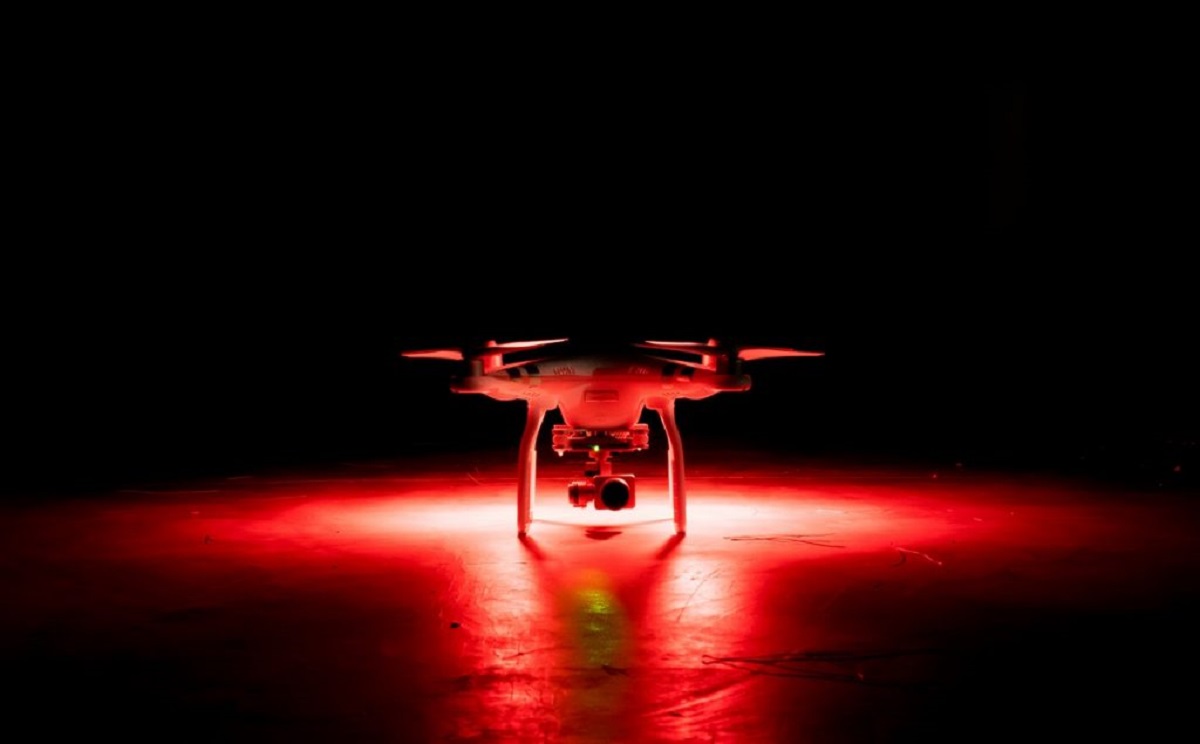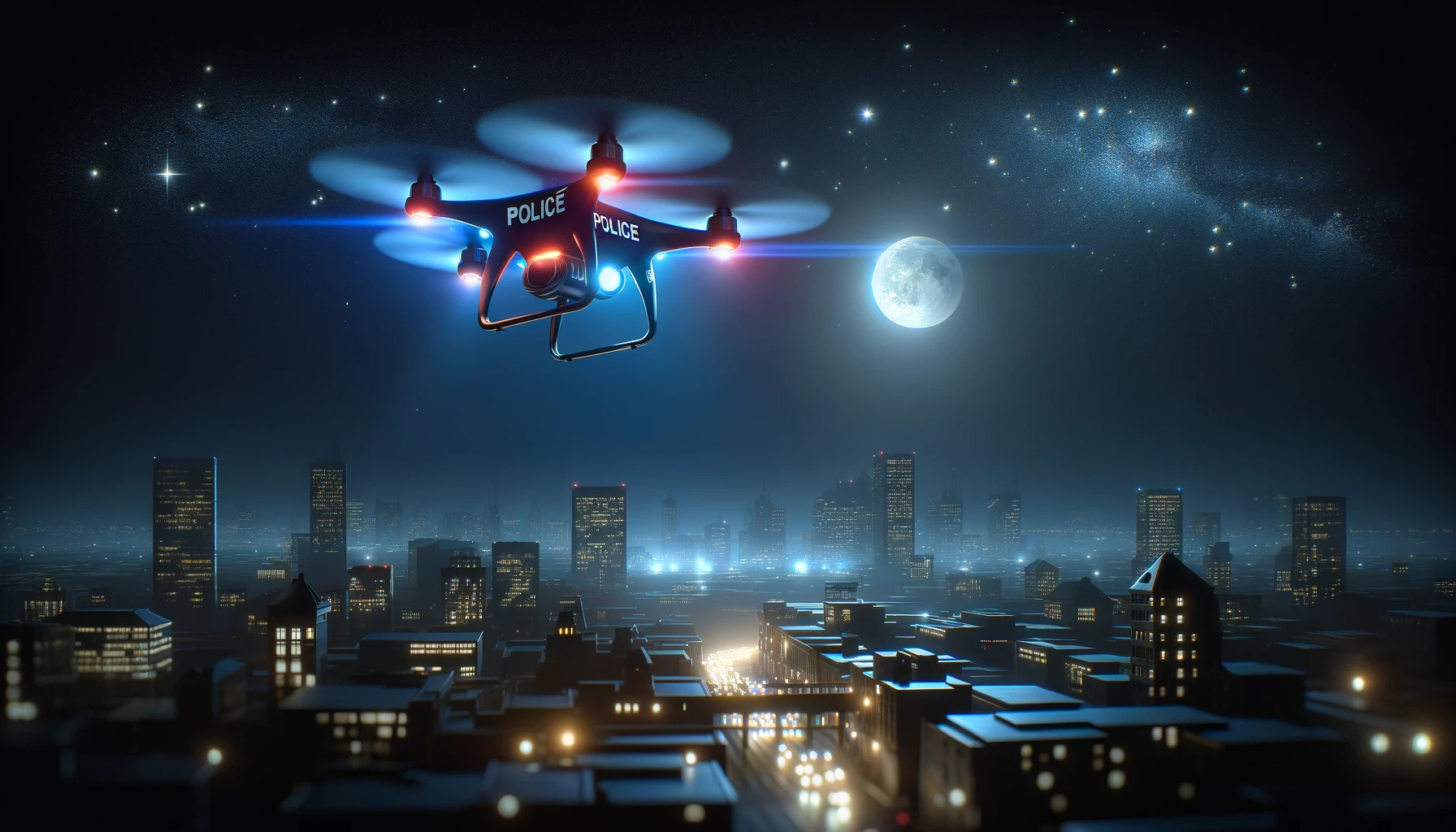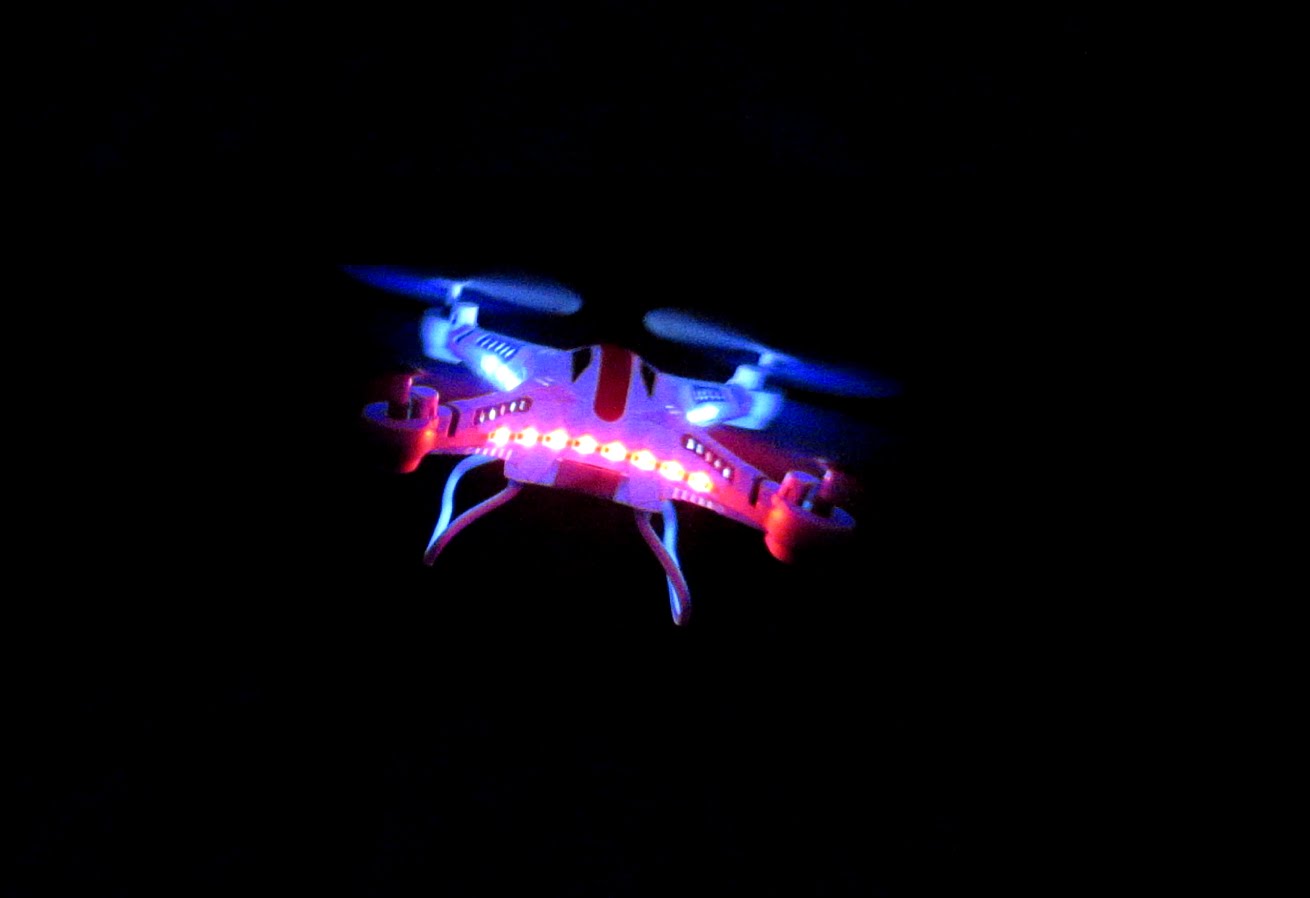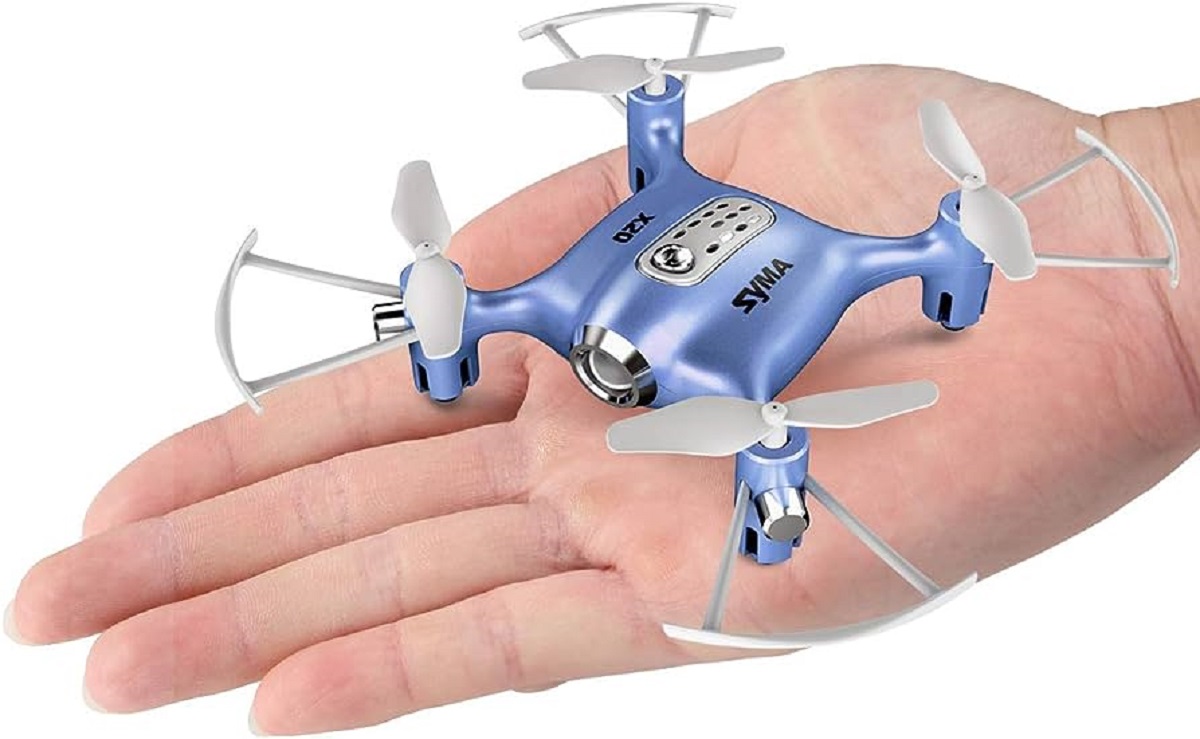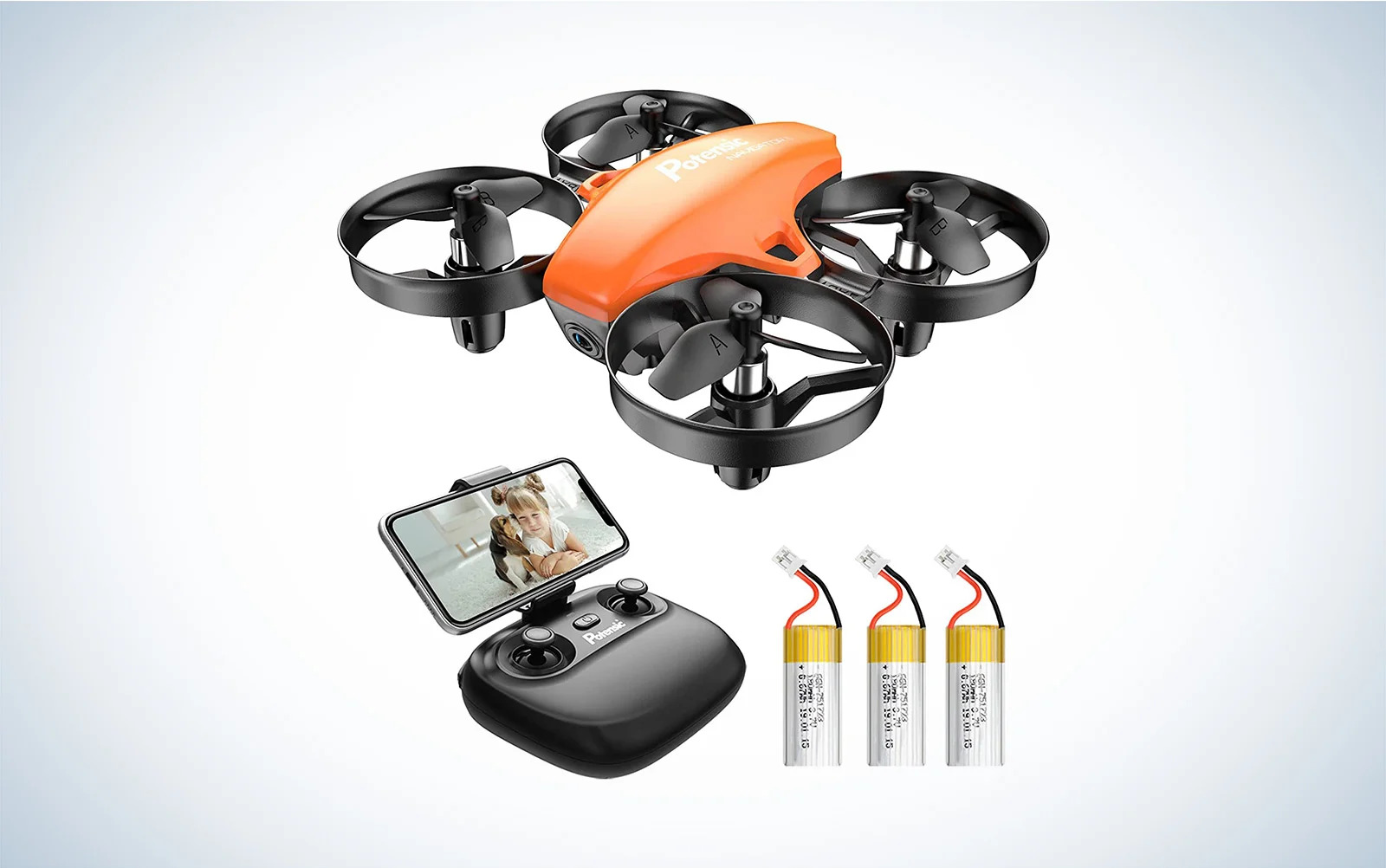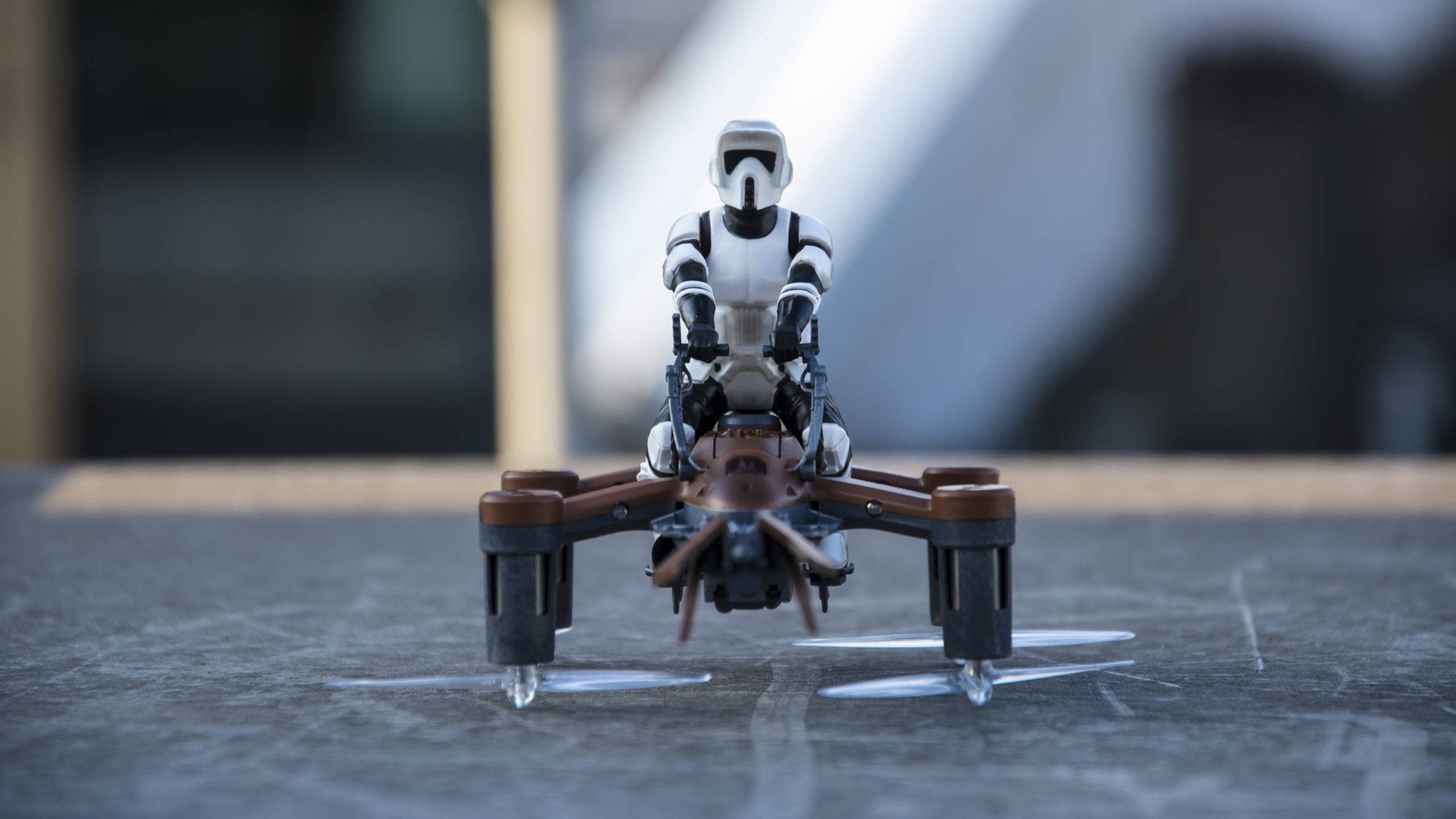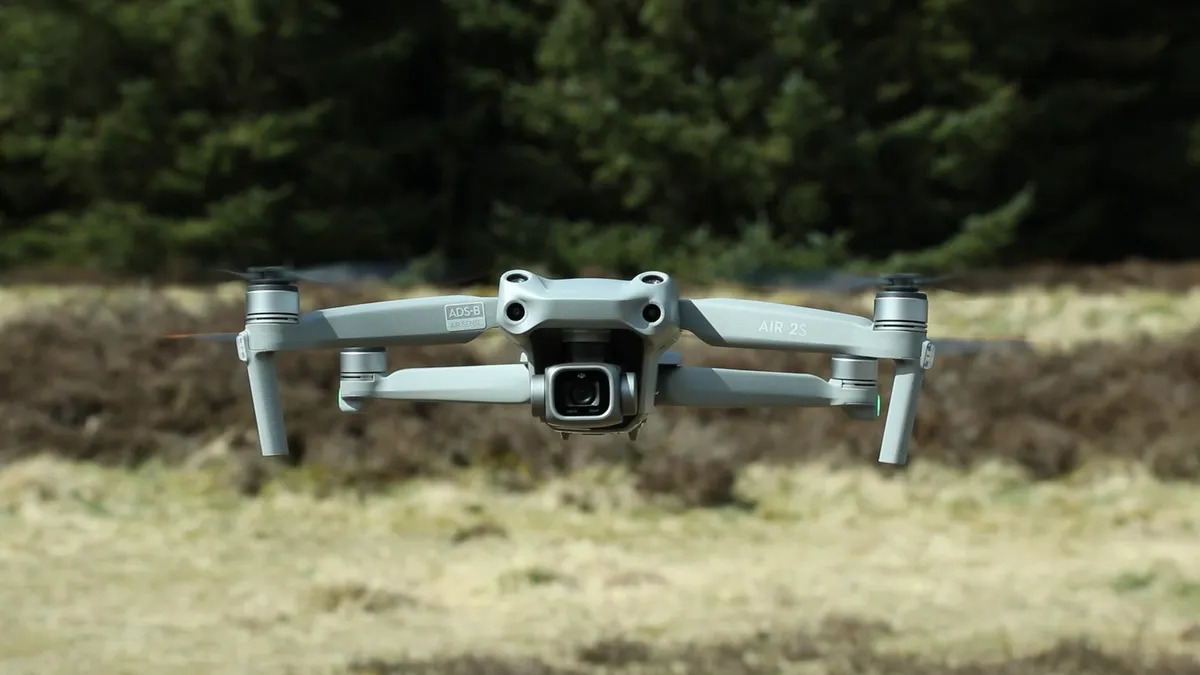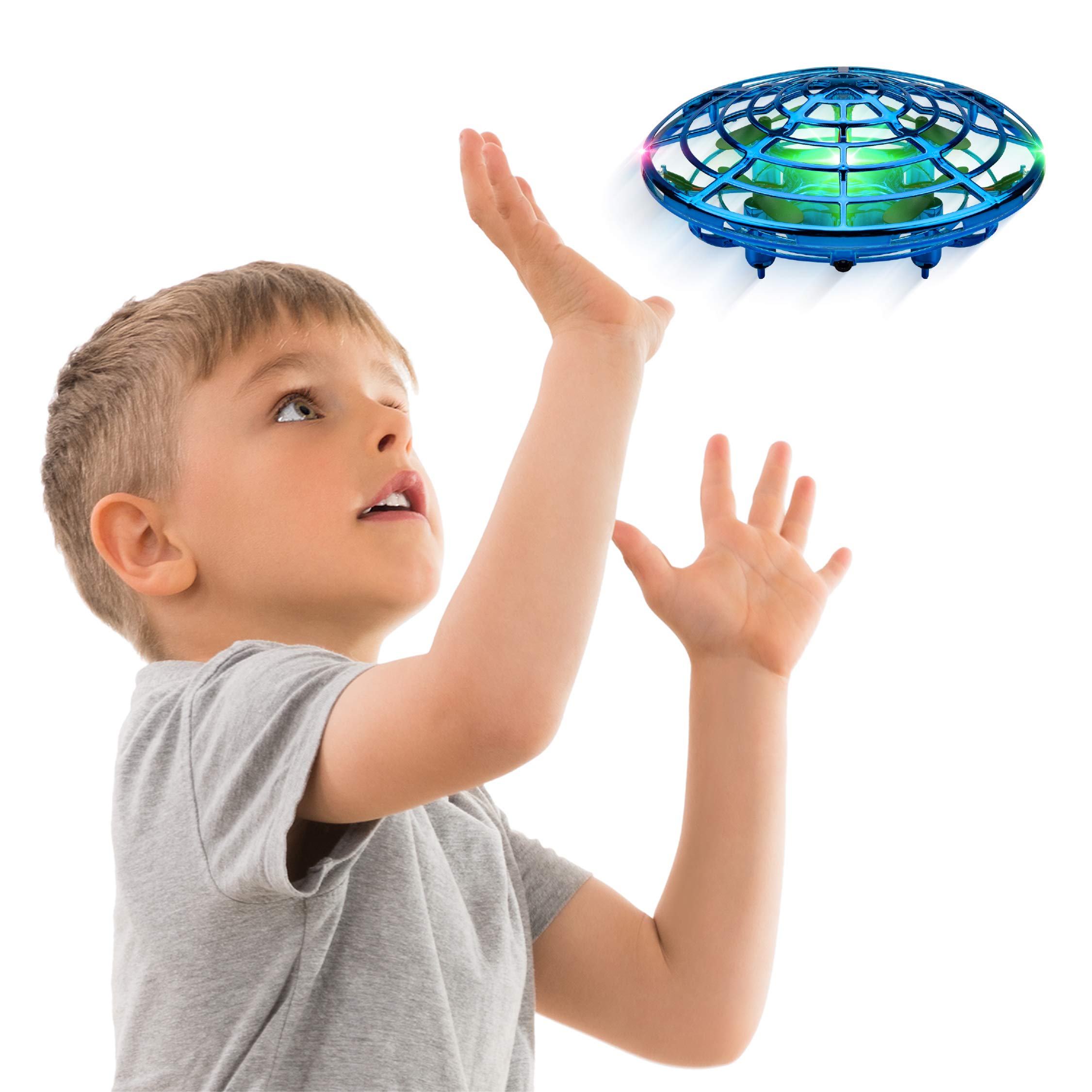Introduction
As drones continue to gain popularity and become a common sight in the skies, it is important to understand the various safety measures that ensure their responsible usage, especially at night. One crucial aspect of drone safety is the presence of lights on these unmanned aerial vehicles. These lights not only help improve visibility but also serve as indicators for other aircraft and individuals on the ground.
Drone lights play a significant role in ensuring safe flight operations during nighttime conditions. They enhance the visibility of the drone, making it easier for the pilot to monitor the aircraft’s position and orientation. Additionally, these lights indicate the drone’s presence to other pilots and people on the ground, reducing the risk of collisions and potential accidents.
In this article, we will explore the importance of drone lights at night, understand how the lighting system works on drones, and delve into the different colors of lights used. We will also discuss the reasons behind using predominantly white lights and the significance of flashing lights on drones. By the end of this article, you will have a comprehensive understanding of the role and significance of drone lights in ensuring safe and responsible operation.
The Importance of Drone Lights at Night
When flying a drone at night, the importance of having properly functioning and visible lights cannot be overstated. Drones are relatively small and can be difficult to spot in the dark, especially from a distance. This is where the role of drone lights becomes crucial.
One of the primary reasons for having lights on drones at night is to ensure the safety of other aircraft. Pilots flying manned planes or helicopters rely on visual cues to detect and avoid obstacles in the sky. Without proper lighting on a drone, it may be challenging for pilots to spot them and take evasive action, potentially leading to dangerous situations.
Moreover, drone lights are essential for keeping people on the ground safe. Imagine a scenario where a drone is flying in a park or another public area at night without any visible lights. It can pose a significant hazard to pedestrians, cyclists, or drivers who may not notice its presence until it’s too late. By having bright and prominent lights on drones, the chances of accidents or collisions can be significantly reduced.
Another critical aspect is that drone lights assist the pilot in maintaining visual contact with the aircraft. Flying a drone at night can be challenging due to reduced visibility. However, with the help of well-placed lights, the pilot can easily identify the drone’s position, orientation, and flight path. This enables better control and maneuverability, preventing accidents and mishaps.
Furthermore, drone lights are essential for complyin
How Does Lighting System Work on Drones?
The lighting system on drones is designed to provide visibility and serve as indicators for other aircraft and individuals. It typically consists of several lights strategically placed on different parts of the aircraft for maximum effectiveness.
One of the key components of the lighting system is the navigation lights. These lights are often positioned on the front and back of the drone and are used to indicate the orientation of the aircraft. The front lights are typically white in color, while the rear lights may be red or green, depending on the regulations and standards followed in a particular region.
The white front light on a drone helps the pilot and other observers determine the direction the drone is facing. This is especially crucial during night flights when visual cues are limited. The rear lights, on the other hand, help indicate the orientation and movement of the drone. A red light is usually placed on the left, while a green light is placed on the right, resembling the standard navigation lights used on manned aircraft.
In addition to navigation lights, drones may also have other lights for enhanced visibility and safety. These may include strobe lights, which are high-intensity flashing lights. Strobe lights help draw attention to the drone, making it more visible from a distance and helping to alert other aircraft of its presence. Strobe lights are particularly useful in low-light conditions or situations where the drone is flying at higher altitudes.
The lighting system on drones is usually powered by the aircraft’s onboard battery. It is important for drone operators to ensure that the lights are functioning properly before each flight and have sufficient power to last the duration of the flight. Some drones also come with customizable options for the lighting system, allowing users to adjust the intensity, color, and flashing patterns of the lights according to their preferences.
Overall, the lighting system on drones plays a vital role in ensuring the visibility and safety of the aircraft. It allows pilots to maintain control and awareness of the drone’s position, and helps other aircraft and individuals to identify its presence, reducing the risk of collisions and accidents during nighttime operations.
What Colors Are Drone Lights At Night?
When it comes to drone lights at night, different colors are used to serve specific purposes and comply with aviation regulations. The colors help to indicate the location, orientation, and intention of the drone to other aircraft and individuals on the ground.
One of the most common colors of drone lights at night is white. White lights are typically used as forward-facing lights and help to indicate the direction the drone is facing. These lights are bright and easily distinguishable, even from a distance. They assist the pilot in maintaining visual contact with the drone and allow observers to determine the aircraft’s movements and orientation.
In addition to white lights, drones may also feature red and green lights. These lights are often positioned on the rear of the drone and serve as navigation lights. The red light is placed on the left side of the aircraft, while the green light is positioned on the right. These colors mimic the standard navigation lights used on manned aircraft and help other pilots determine the drone’s direction of movement.
The use of red and green lights on drones follows the same principle as navigation lights on other aircraft. When an observer sees a red light, they understand that the drone is moving away or to the left. Conversely, a green light indicates that the drone is moving away or to the right. This standardized color scheme facilitates clear communication of the drone’s movements, reducing the risk of confusion or collision with other aircraft in the vicinity.
While white, red, and green are the most commonly used colors for drone lights at night, other colors may also be employed. Blue lights, for example, are sometimes used to indicate that the drone carries a payload or is engaged in a specific mission. Amber lights may be used for warning or cautionary purposes, signifying potential hazards or restricted areas. These additional colors are typically used in specific situations or to convey specific information to observers.
It is important to note that the choice of colors may vary depending on regional regulations and aviation authorities. It is essential for drone operators to familiarize themselves with the rules and regulations of their specific location to ensure compliance with color requirements for drone lights at night.
In summary, the colors of drone lights at night serve important purposes in indicating the drone’s orientation, direction, and intention. White lights indicate the forward-facing direction, while red and green lights act as navigation lights. Other colors, such as blue and amber, may be used for specific missions or to convey warning or cautionary messages. Understanding the meaning of these colors helps ensure safe and responsible drone operation at night.
Why Are Drone Lights Mostly White?
One may wonder why drone lights are predominantly white as opposed to other colors. The reason behind this choice is primarily based on visibility and standardization.
White lights are highly visible, especially in low-light or dark conditions. They stand out against the night sky and make it easier for both pilots and observers on the ground to identify the position and movements of the drone. As a result, the use of white lights enhances the overall visibility of the aircraft, reducing the chances of accidents or collisions.
Furthermore, the predominant use of white lights on drones contributes to standardization in aviation. Just like the navigation lights on manned aircraft, white lights on drones indicate the forward-facing direction of the aircraft. This uniformity in lighting schemes ensures consistent and clear communication of the drone’s orientation and intention to other aircraft in the airspace.
Standardizing the color of drone lights also simplifies the process of interpreting their meaning for both pilots and observers. This reduces the risk of confusion or misunderstandings, especially during night operations when visual cues are crucial. Pilots and other aircraft operators are well-acquainted with the meaning of white lights, further enhancing overall safety in the airspace.
However, it is important to note that the choice of white lights as the primary color does not mean that other colors are completely absent on drones. As mentioned earlier, drones may feature additional lights of different colors, such as red, green, blue, or amber, for specific purposes or to convey particular messages. Nevertheless, the prominence of white lights ensures consistent visibility and easy identification of the drone in various situations.
Another reason for using white lights is the efficiency of LEDs (light-emitting diodes) in producing a bright and clear white light. LEDs are commonly used as light sources on drones due to their low power consumption and long lifespan. The use of white LEDs ensures that the drone’s lighting system remains energy-efficient while providing optimal visibility during night flights.
In summary, drone lights are mostly white due to their high visibility, standardization in aviation, and the efficiency of white LEDs. These lights enhance the overall visibility of the drone, contribute to clear communication with other aircraft, and maintain energy efficiency. While other colors may be used for specific purposes, the use of predominantly white lights ensures safe and responsible drone operations at night.
Red and Green Navigation Lights
In addition to white lights, drone lighting systems often include red and green lights that serve as navigation lights. These colors play a crucial role in indicating the direction and movement of the drone to other aircraft and observers.
The use of red and green navigation lights on drones is rooted in the same principles as those used on manned aircraft. The red light is typically positioned on the left side of the drone, while the green light is placed on the right. This placement allows for consistent interpretation of the drone’s orientation and movement, aligning with the standard practice in aviation.
When an observer sees a red navigation light, they immediately understand that the drone is moving away or to the left. Conversely, a green light indicates that the drone is moving away or to the right. This color scheme provides a clear and recognizable system for other pilots and aircraft to interpret the drone’s position and trajectory in the sky.
The use of red and green navigation lights on drones enables effective communication and helps prevent potential mid-air collisions. Each color serves as a visual indicator of the relative position and movement of the drone, allowing other aircraft to take appropriate avoiding action when necessary.
Moreover, the use of red and green lights enhances safety for observers on the ground. These colors provide important visual cues for individuals who may be near the flight path of a drone. The consistent use of red and green lights allows pedestrians, cyclists, and drivers to anticipate the drone’s direction and ensure their own safety as they navigate the surrounding area.
It is worth noting that the regulations regarding red and green navigation lights on drones may vary in different regions. Drone operators must familiarize themselves with the specific rules and requirements of their location to ensure compliance with navigation light color standards.
Overall, the inclusion of red and green navigation lights on drones facilitates effective communication and safety in the airspace. These colors provide clear indicators of the drone’s movement and orientation, allowing other aircraft and individuals to respond appropriately. By following the standard practices set by manned aircraft, drone operators can ensure safer and more responsible operation during nocturnal flights.
Why Do You Need to Understand Drone Light Colors?
Understanding the colors of drone lights is vital for several reasons, whether you’re a drone operator, a pilot of a manned aircraft, or an individual on the ground. It ensures safety, facilitates communication, and helps prevent accidents or collisions during nighttime operations.
One of the key reasons to understand drone light colors is to enhance situational awareness. By knowing what each color represents, you can easily interpret the drone’s movements, orientation, and intentions. This knowledge allows you to anticipate its trajectory and take appropriate action if necessary to avoid any potential conflicts.
For drone operators, understanding the meaning of different colors helps ensure responsible and compliant flight operations. It allows you to utilize the appropriate lights and follow aviation regulations. This not only promotes safety but also demonstrates professionalism and good airmanship.
Additionally, for pilots of manned aircraft, comprehending drone light colors is crucial for airspace safety. By understanding the significance of each color, pilots can quickly identify the position and movement of drones in their vicinity. This knowledge enables them to adjust their own flight path and adhere to collision avoidance procedures, preventing any potential mid-air incidents.
Understanding drone light colors is equally important for individuals on the ground. Whether you’re a pedestrian, cyclist, or driver, spotting and interpreting drone lights correctly can help you navigate safely around a drone’s flight path. It allows you to anticipate the drone’s movements and take any necessary precautions to prevent collisions or accidents.
Moreover, understanding drone light colors fosters effective communication between drone operators and other airspace users. By utilizing the standardized color scheme, pilots can convey their intentions and the drone’s orientation more clearly. This helps eliminate confusion and ensures smooth coordination between different aircraft, ultimately enhancing overall safety.
Finally, being knowledgeable about drone light colors promotes a culture of responsible drone operation. When operators and enthusiasts understand the importance of using the correct colors and lighting configurations, they contribute to the safe integration of drones into the national airspace system. This understanding reduces the risk of incidents and supports the positive perception of drones in the public eye.
In summary, understanding drone light colors is essential for promoting safety, facilitating communication, and avoiding accidents or collisions. Whether you’re a drone operator, a pilot of a manned aircraft, or an individual on the ground, being aware of the meanings and significance of different colors enables you to make informed decisions and take appropriate actions to ensure the safe and responsible use of drones during nighttime operations.
What Is the Purpose of Flashing Lights on Drones?
Flashing lights are an integral part of drone lighting systems and serve important purposes during nighttime operations. They provide additional visibility and help in distinguishing drones from other sources of light in the sky.
One primary purpose of flashing lights on drones is to draw attention to the aircraft. The intermittent and repetitive flashing pattern makes the drone more noticeable, especially in low-light conditions. This increased visibility is crucial for other pilots, who may need to adjust their flight paths to avoid the drone, and for individuals on the ground, who may need to navigate safely around it.
Flashing lights also aid in distinguishing drones from other flying objects, such as airplanes, helicopters, or even stars. The unique flashing pattern is easily identifiable, allowing observers to differentiate a drone from other aircraft in the vicinity. This distinction helps alleviate any confusion or misinterpretation, contributing to overall airspace safety.
Furthermore, the use of flashing lights on drones has dual benefits for collision avoidance. Firstly, the rapid flashing catches the eye and alerts other pilots to the presence of a drone in their airspace. This early warning enables them to take appropriate evasive action, reducing the risk of mid-air collisions.
Secondly, flashing lights help prevent accidents by enhancing the detectability of drones for individuals on the ground. Whether it’s pedestrians, cyclists, or drivers, the flashing lights make the drone stand out, prompting them to modify their behavior or avoid potential collision situations.
Flashing lights are particularly valuable when drones are operating at higher altitudes or in areas with limited ambient lighting. In these situations, the intermittent flashes can be seen from greater distances, making the drone more easily discernible.
It is important to note that different countries may have specific regulations governing the use of flashing lights on drones. Operators must familiarize themselves with the local laws and requirements to ensure compliance.
Overall, flashing lights on drones serve the crucial purpose of increasing visibility and distinguishing drones from other aircraft or sources of light in the sky. They draw attention to the drone’s presence, facilitate collision avoidance, and enhance safety for both pilots and individuals on the ground. Understanding the significance of flashing lights on drones promotes responsible and considerate operation, contributing to the safe and efficient integration of drones into the airspace.
Conclusion
Drone lights are a vital component of safe and responsible drone operations, especially when flying at night. They enhance visibility, indicate orientation and direction, and help prevent accidents and collisions with other aircraft and individuals. Understanding the different colors and purposes of drone lights is crucial for drone operators, pilots of manned aircraft, and people on the ground.
The use of predominantly white lights on drones ensures visibility and standardization in aviation. White lights help the pilot maintain visual contact with the drone and allow other observers to determine the aircraft’s movements and orientation. Red and green navigation lights aid in indicating direction and facilitate communication between drones and other aircraft. The flashing lights on drones are designed to draw attention, increase visibility, and differentiate drones from other flying objects.
By understanding drone light colors, drone operators can ensure compliant and responsible flight operations. Pilots of manned aircraft can better identify drones in their airspace and make appropriate adjustments to avoid collisions. Individuals on the ground can navigate safely around drones by understanding their movements and intentions.
Overall, understanding drone light colors fosters situational awareness, effective communication, and a culture of responsible operation. It promotes safety, reduces the risk of accidents or collisions, and supports the integration of drones into the airspace. By adhering to the regulations and utilizing the appropriate lighting systems, we can make night flights with drones safer and more enjoyable for everyone involved.







